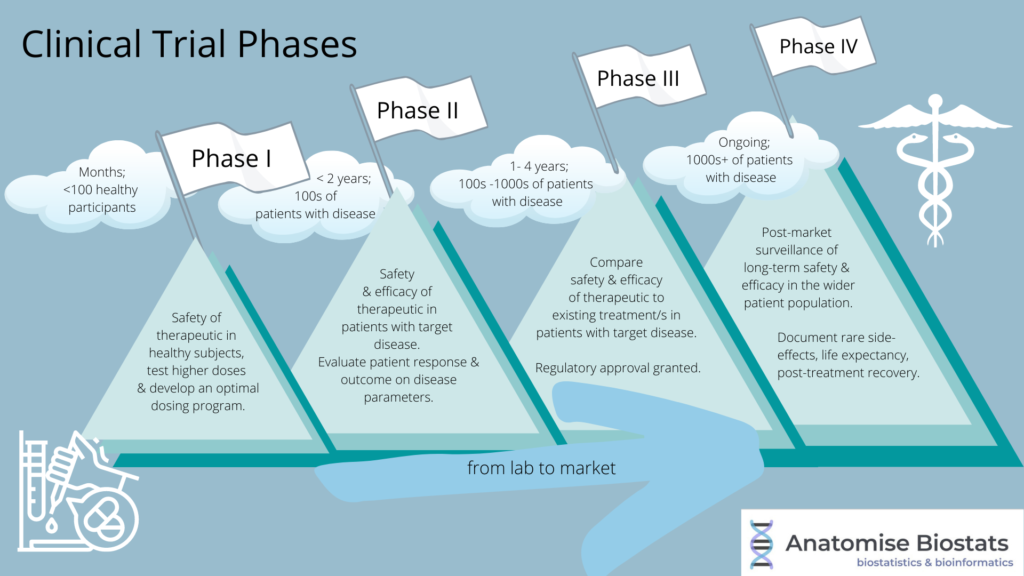Roche's $3.5B Gambit: Why Big Pharma is Betting Big on Liver Disease's Next Frontier
Swiss pharmaceutical giant Roche has struck a $2.4 billion cash deal to acquire clinical-stage biotech 89bio, with potential payments reaching $3.5 billion through milestone-based contingent value rights. The acquisition positions Roche as a major player in the rapidly evolving metabolic dysfunction-associated steatohepatitis market, where the company sees an opportunity to build a fortress around liver disease treatment adjacent to the obesity drug revolution.

The deal, announced today, offers 89bio shareholders $14.50 per share in cash—a 52% premium to the company's 60-day volume-weighted average price—plus non-tradeable contingent value rights worth up to $6 per share based on commercial milestones for 89bio's lead asset, pegozafermin.
The Strategic Chess Move Behind GLP-1 Dominance
While Novo Nordisk and Eli Lilly wage war in the obesity market with their blockbuster GLP-1 drugs, Roche is executing what industry observers call a sophisticated flanking maneuver. Rather than compete head-to-head in weight loss, the company is building a portfolio of "adjacent essential therapies" that could benefit from—rather than compete with—the expanding incretin market.
GLP-1 drugs mimic a natural hormone to regulate blood sugar, satiety, and metabolism, often used for conditions like type 2 diabetes and weight management. MASH, or Metabolic Dysfunction-Associated Steatohepatitis, is the new nomenclature for NASH, representing a severe form of fatty liver disease strongly linked to metabolic dysfunction.
Pegozafermin, an FGF21 analogue with glycoPEGylated technology, represents the centerpiece of this strategy. The drug targets liver fibrosis through anti-fibrotic and anti-inflammatory mechanisms, offering a complementary approach to GLP-1's weight-loss-first biology. Industry analysts suggest this positions Roche to capture value from patients whose metabolic conditions extend beyond weight management into organ-specific complications.
Projected growth of the global GLP-1 receptor agonist market, illustrating the massive market Roche is positioning itself adjacent to.
| Year | Global Market Size (USD Billion) |
|---|---|
| 2024 | 53.46 |
| 2030 | 156.71 |
| 2032 | 471.1 |
The timing reflects broader market dynamics reshaping liver disease treatment. With resmetirom becoming the first approved MASH treatment in 2024, the therapeutic landscape has shifted from proving approvability to demonstrating comparative advantage in combination regimens.
De-risked Asset with Regulatory Tailwinds
89bio's pegozafermin has demonstrated compelling clinical signals that distinguish it from earlier MASH drug failures. The Phase 2b ENLIVEN trial achieved both FDA-relevant histology endpoints—fibrosis improvement and MASH resolution—with results published in the New England Journal of Medicine. The European Medicines Agency's grant of priority medicines status further validates the regulatory pathway.

Market specialists point to the drug's weekly or bi-weekly dosing schedule as a potential advantage over daily oral therapies, particularly for patients requiring combination treatment with existing metabolic medications. The mechanism's ability to address both metabolic dysfunction and liver fibrosis directly could prove crucial as physicians seek comprehensive treatment approaches.
However, the path forward requires navigating Phase 3 execution risks and evolving regulatory expectations for liver biopsy endpoints. The industry has learned from resmetirom's accelerated approval that post-marketing outcome studies will ultimately determine commercial success.
Risk-Calibrated Deal Structure Signals Confidence
The acquisition's contingent value structure reveals Roche's calculated approach to risk management. The CVR payments are tied to specific commercial achievements: $2 per share for first sales in advanced fibrosis patients by March 2030, $1.50 per share for reaching $3 billion in global annual sales by 2033, and $2.50 per share for achieving $4 billion by 2035.
Contingent Value Rights (CVRs) are a special security issued in mergers and acquisitions, frequently in the pharmaceutical sector. They grant the seller the right to receive future payments contingent on the achievement of specific milestones or performance targets post-acquisition, thereby helping to bridge valuation gaps between buyer and seller.
Financial analysts view these thresholds as ambitious but achievable benchmarks. The $3 billion target assumes successful launch across major markets, pricing in the $30,000-50,000 annual range, and meaningful penetration in combination therapy protocols. The $4 billion milestone would require either broad pre-cirrhotic market expansion or demonstrable superiority in combination with incretin therapies.
A breakdown of the Roche-89bio deal structure, separating the upfront cash payment from the potential milestone-based CVR payments.
| Payment Type | Amount (per share) | Total Aggregate Value | Description/Conditions |
|---|---|---|---|
| Upfront Cash Payment | US$14.50 | Approximately US$2.4 billion | Cash payment made at the closing of the tender offer to acquire all outstanding shares of 89bio common stock. |
| Contingent Value Right (CVR) - Maximum Potential | Up to US$6.00 | Up to approximately US$1.0 billion (Total deal value up to US$3.5 billion) | Non-tradeable CVR tied to the achievement of specific commercial milestones for pegozafermin. There is no assurance that any CVR payments will be made. |
| CVR Milestone 1 | US$2.00 | - | Contingent upon the first commercial sale of pegozafermin in F4 MASH cirrhotic patients by March 31, 2030. |
| CVR Milestone 2 | US$1.50 | - | Contingent upon pegozafermin reaching annual net sales globally of at least US$3.0 billion in any calendar year by December 31, 2033. |
| CVR Milestone 3 | US$2.50 | - | Contingent upon pegozafermin reaching annual net sales globally of at least US$4.0 billion in any calendar year by December 31, 2035. |
This structure allows Roche to acquire proven clinical assets while sharing the commercial execution risk with 89bio shareholders. Industry veterans note this approach has become increasingly common as Big Pharma seeks to balance innovation acquisition with capital discipline.
The Coming Combination Therapy Wars
The MASH treatment paradigm is rapidly evolving toward combination approaches, with pegozafermin positioned to play a central role. Unlike first-generation therapies that targeted single pathways, the next wave focuses on addressing the disease's complex metabolic and inflammatory components simultaneously.
Roche's broader cardiovascular-renal-metabolic strategy includes recent acquisitions in obesity (Carmot Therapeutics) and amylin pathway drugs (Zealand Pharma partnerships). Industry observers expect the company to initiate combination trials pairing pegozafermin with both incretin and amylin therapies, potentially creating a differentiated multi-drug regimen for high-risk patients.
The competitive implications extend beyond traditional liver disease specialists. As Novo Nordisk and Eli Lilly advance their own MASH programs within existing incretin franchises, the market may fracture between "incretin-first" approaches emphasizing weight loss and "liver-first" strategies targeting fibrosis directly.
Diagnostic Innovation as Market Differentiator
Success in the emerging MASH market will increasingly depend on non-invasive diagnostic capabilities that can guide treatment decisions and monitor response. Traditional liver biopsies create bottlenecks that limit patient access and treatment monitoring.
89bio's clinical program emphasizes correlation between drug response and non-invasive tests including vibration-controlled transient elastography, enhanced liver fibrosis panels, and magnetic resonance imaging. Establishing these diagnostic pathways could provide significant advantages in payer negotiations and clinical adoption.
Market access specialists suggest that therapies demonstrating clear correlation between non-invasive markers and treatment response will gain preferential coverage, particularly for combination regimens where treatment costs may exceed $60,000-100,000 annually before payer discounts.
Investment Implications and Market Outlook
The acquisition signals broader industry confidence in liver-focused metabolic disease treatments as complement to, rather than competition for, obesity therapeutics. For Roche shareholders, the deal represents strategic optionality in a market segment where the company can leverage existing relationships with metabolic disease specialists.
89bio shareholders face a straightforward decision: accept certain cash value while retaining upside through non-tradeable contingent payments. Financial models suggest the CVR carries a probability-weighted value of $0.90-1.40 per share, concentrated in the initial commercial milestone rather than the aggressive sales targets.
The transaction may catalyze consolidation activity around Akero Therapeutics, the remaining independent FGF21 developer, as competitors seek to establish positions in combination therapy markets. Akero's ongoing Phase 3 trials in both pre-cirrhotic and cirrhotic populations could provide strategic value to companies lacking liver fibrosis assets.
Forward-Looking Investment Perspective
Analysts suggest the MASH market could reach $35-50 billion globally by the early 2030s, driven by combination therapy adoption and expanded diagnostic capabilities. Companies with complementary mechanisms addressing both metabolic dysfunction and organ-specific complications may command premium valuations.
Investors should monitor regulatory guidance on combination trial designs, payer reception of dual high-cost regimens, and the development of non-invasive diagnostic standards. The success of first-generation MASH therapies in real-world settings will establish benchmarks for second-generation combination approaches.
This analysis is based on current market data and established clinical development patterns. Past performance does not guarantee future results. Investors should consult financial advisors for personalized guidance regarding pharmaceutical sector investments and biotech acquisition strategies.
The Roche-89bio transaction, expected to close in the fourth quarter of 2025 pending regulatory approvals and shareholder tender, represents a calculated bet that the future of metabolic disease treatment lies in sophisticated combination approaches rather than single-mechanism solutions. Whether this strategy delivers on its ambitious commercial projections will depend on successful execution across clinical, regulatory, and market access fronts.
